How to Balance Quality vs. Price in Bordeaux Starting with Saint Émilion #Winophiles
French #Winophiles Writers Share How to Find Quality Affordable Bordeaux
This month, our French #Winophiles writers are sharing their best advice for finding affordable Bordeaux wines for your holiday table. The very top Bordeaux wines are justifiably famous, but no one would ever describe them as affordable! How then to choose? Scroll down further in this post for a list of links to fellow Winophiles with their best affordable holiday Bordeaux advice! I wrote a general affordable Bordeaux post a while back and that advice that still holds true. This month I’m going to focus on a favorite region of mine, Saint-Émilion.
The photos below are from a trip to Bordeaux a few years ago. You can see the fancy Chateaux, the wineries and cellars which would be at home in architectural digest. You can also see the more rolling hills, and rustic right bank towns, including my favorite, Saint Emilion.
(Click on any photo below for a full size slide show)
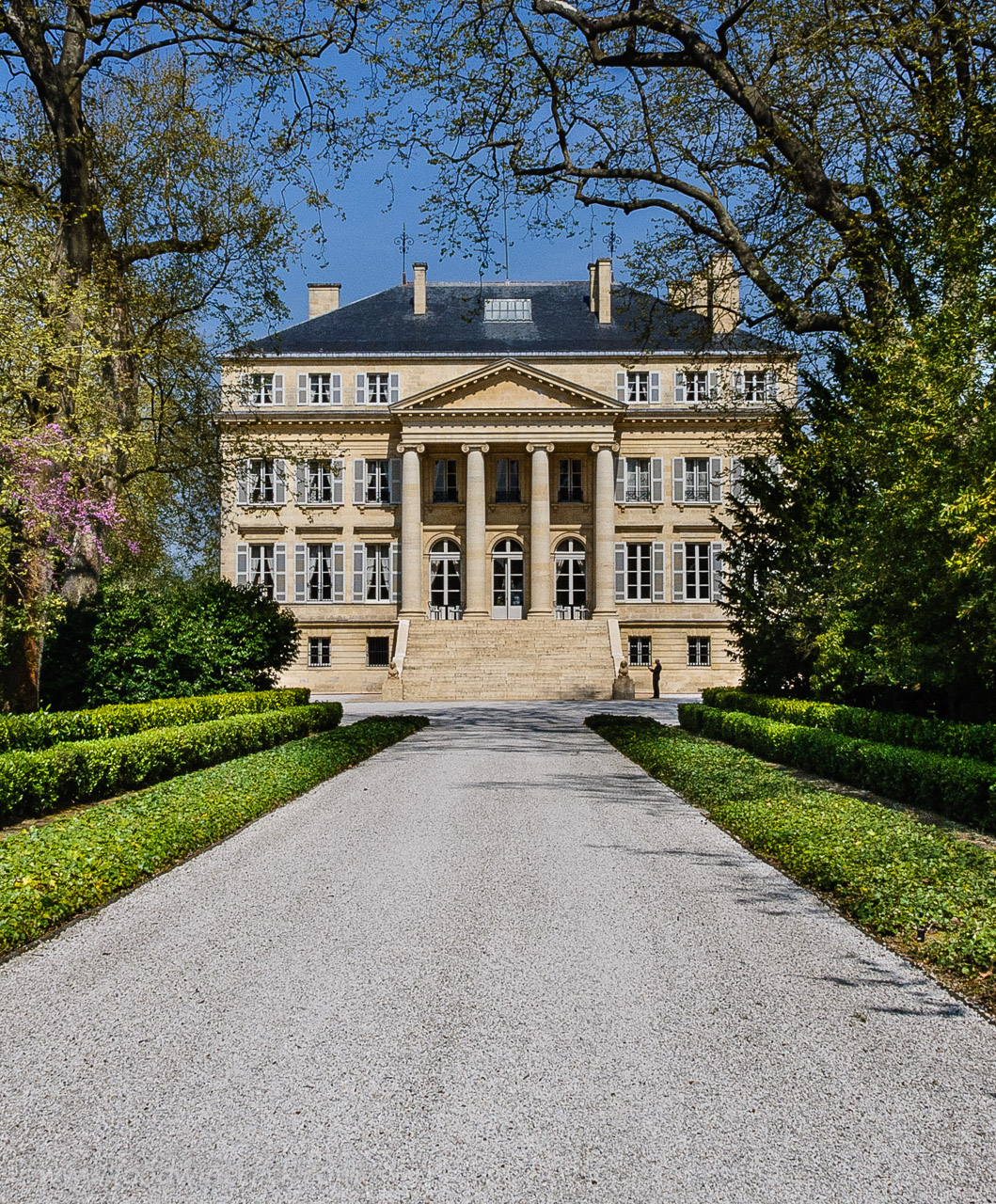
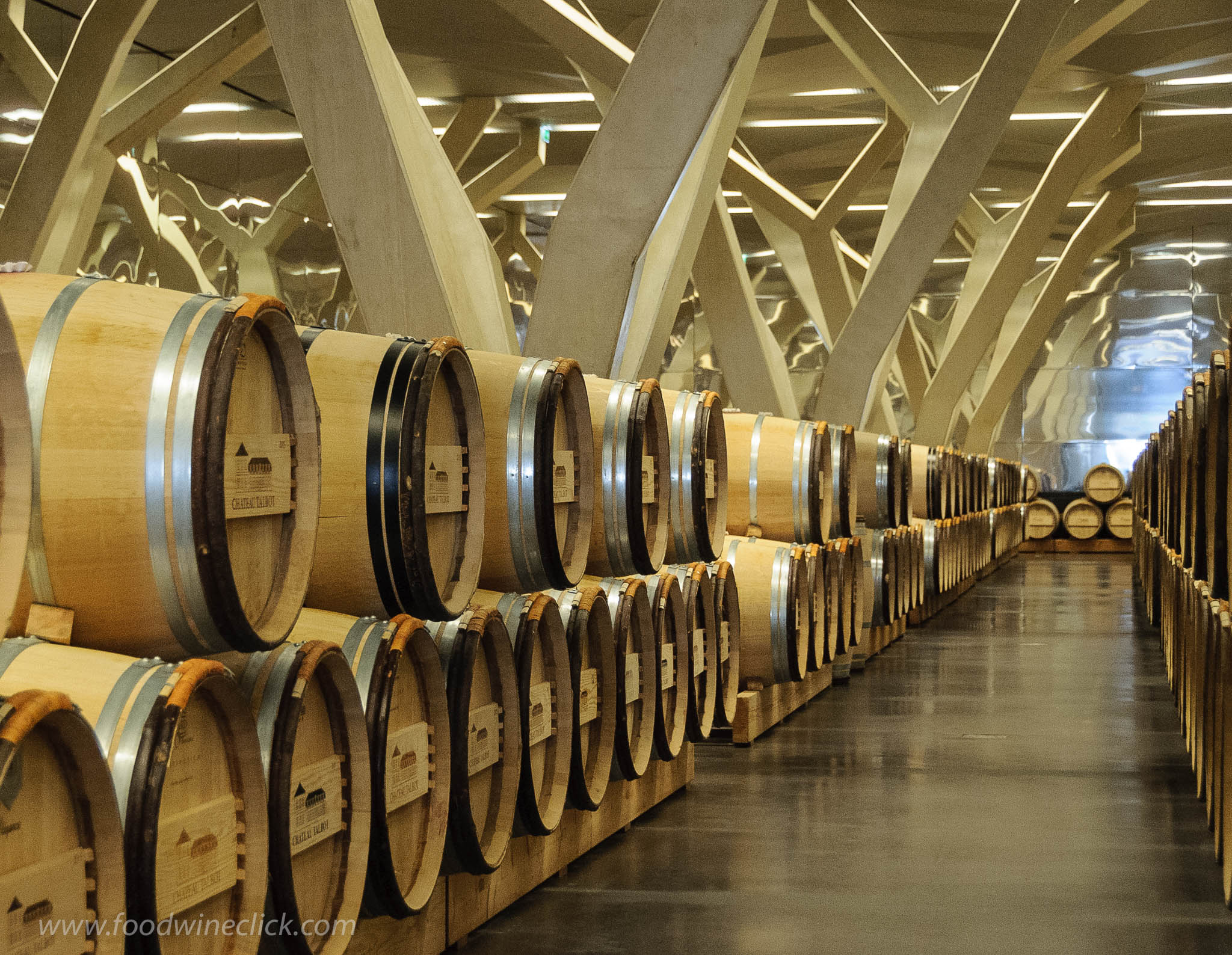
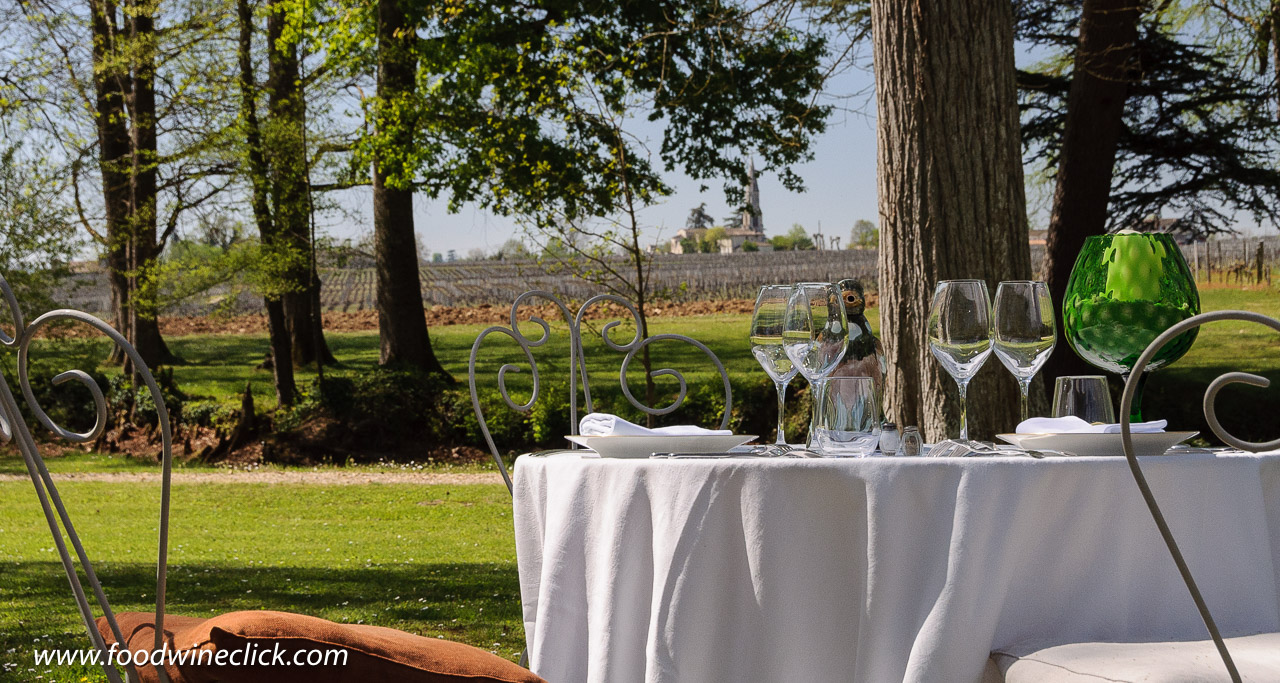
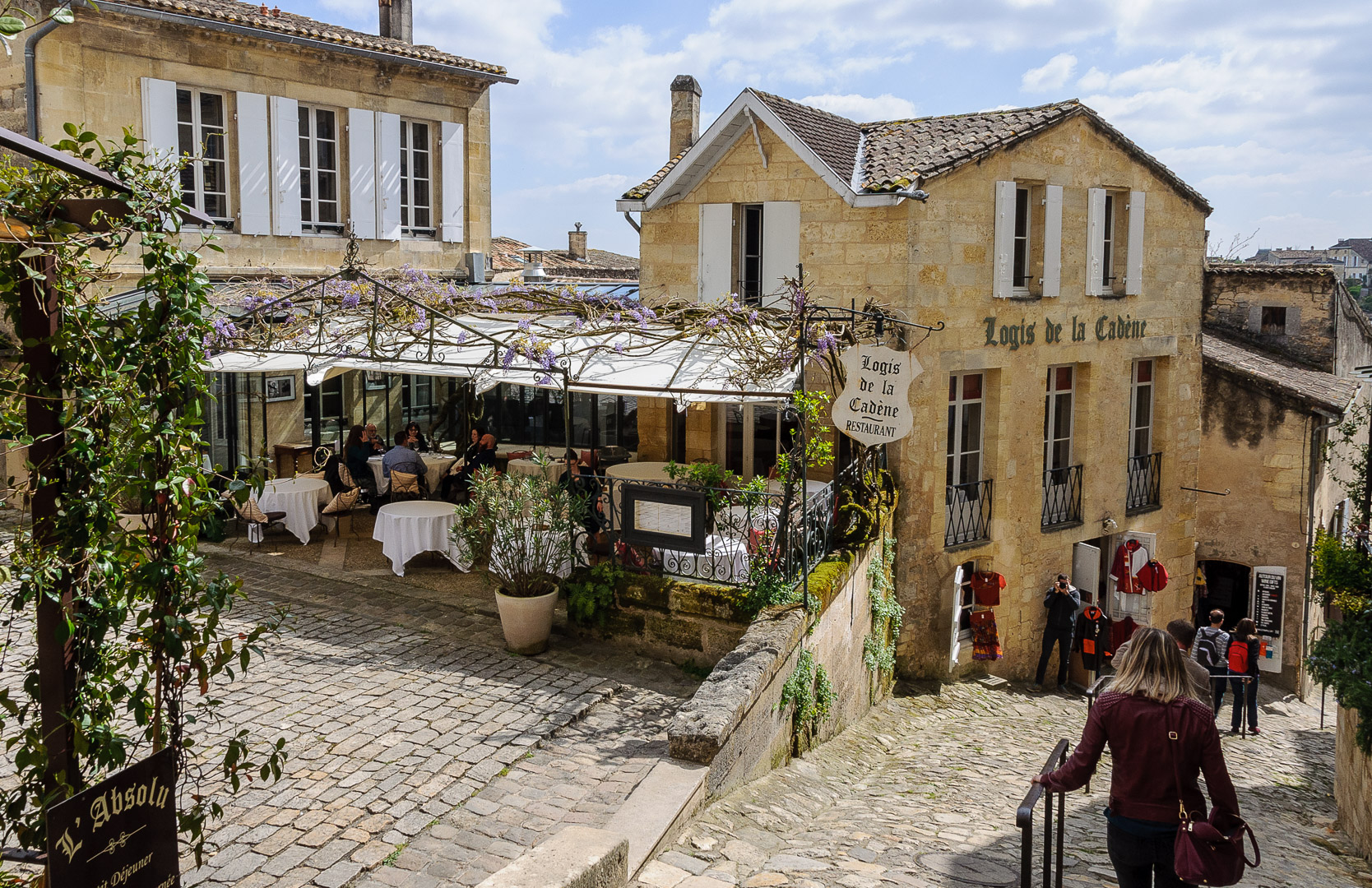
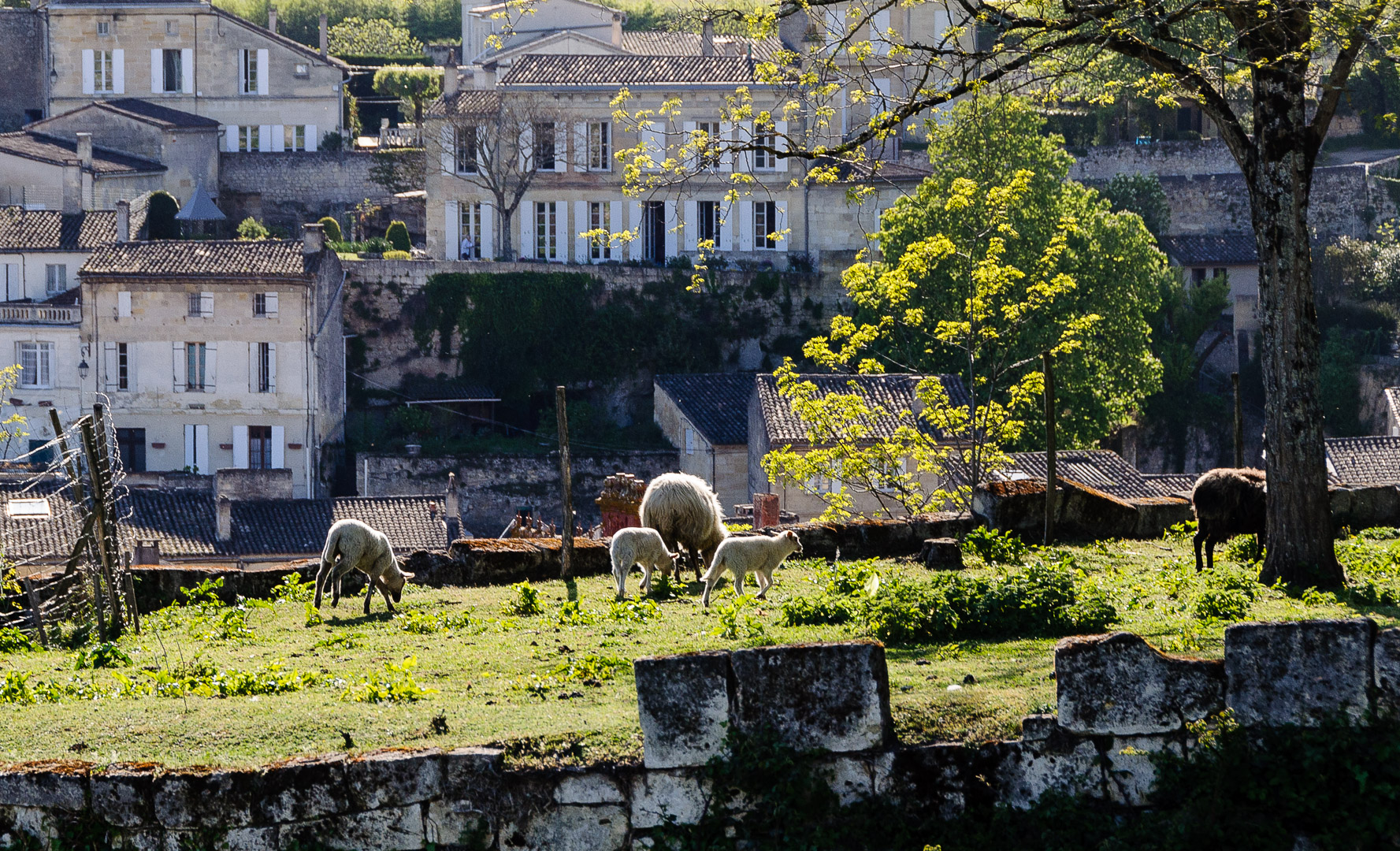
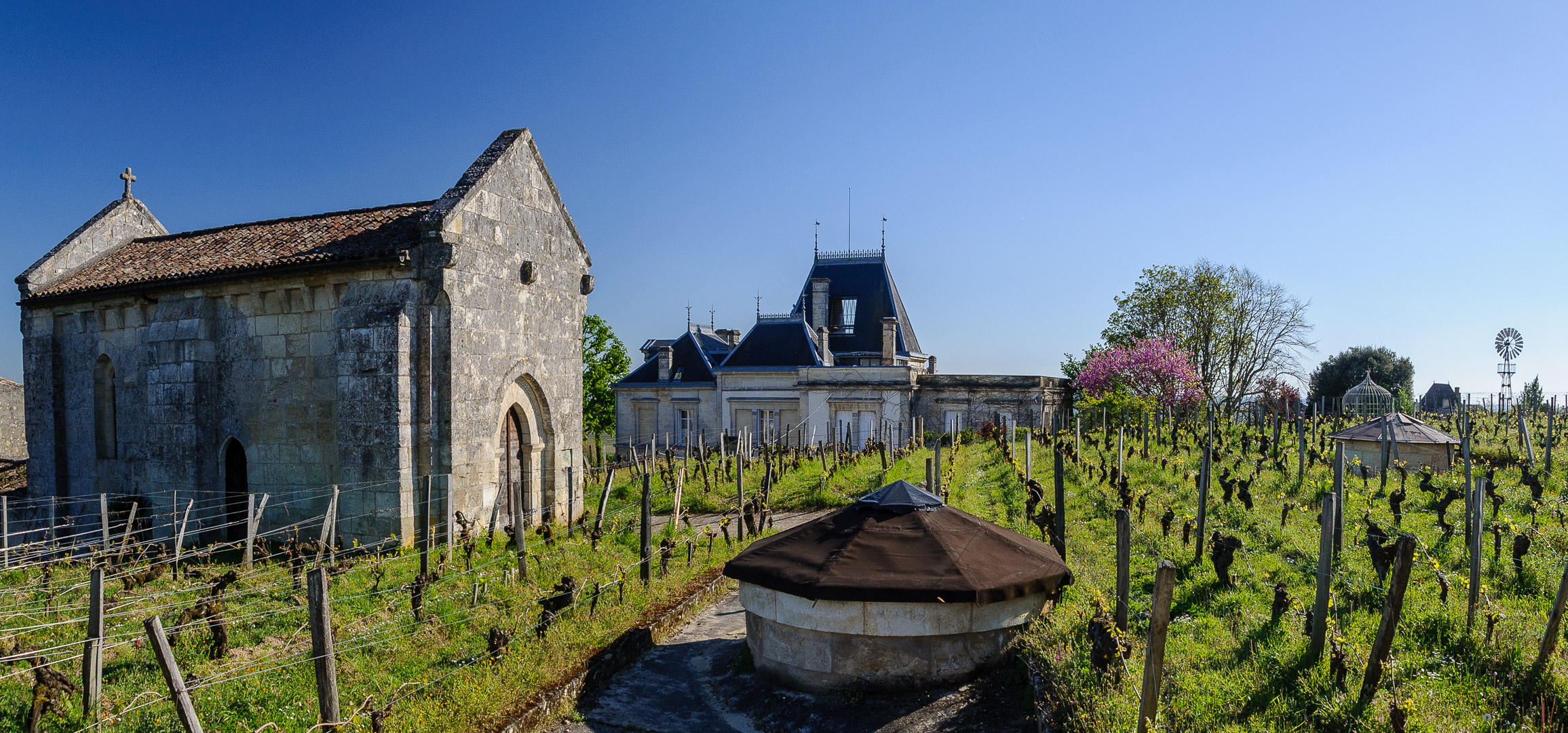
Tackling Bordeaux
Bordeaux is big. BIG. Bordeaux has 111,000 hectares planted to grapes, that’s nearly 250,000 acres. By comparison, Napa Valley is about 20,000 hectares. At a recent count, there are over 7000 wineries. The famous Grand Cru Classé wineries only account for around 100, so there remain a lot to explore. The best way to learn Bordeaux is to break it into smaller segments, find the ones that interest you, then dig into the details. Doing so, you’ll learn how to interpret the official quality levels associated with a sub-region. Of course, there are always individual producers who shine and a few who do not.

Saint-Émilion
Saint-Émilion is on the Right Bank of the Dordogne River, near the city of Libourne. Saint-Émilion covers 5400 hectares (ha) and includes over 800 wineries. Several villages are included within Saint-Émilion, and there are additional satellite villages with Saint-Émilion appended to their name. In wine terms, there are multiple appellations which are associated with quality levels. The top levels of the Saint Emilion heirarchy update their quality ranking scheme every 10 years. This regular reappraisal is different from the Grand Cru Classé over on the Left Bank, which were established in 1855 and are unchanging.This regular assessment sounds great, but moving up or down in the ranking can change a chateau’s fortunes overnight. The real outcome of the update is a new set of lawsuits every 10 years!
Climb the Saint Emilion Quality Ladder
In the following paragraphs, we’ll climb the quality ladder of Saint-Émilion from the satellites up to the upper limit of affordable. If you have the budget to study the Grand Cru Classé, give me a call!


The map on the left shows the entire Bordeaux region, and the map on the right shows the Right Bank with Saint-Émilion in the center.

What to Expect from All Saint-Émilion Wines
Compared to the Left Bank over in the Medoc, the climate in Saint-Émilion is cooler as it’s farther inland from the moderating ocean. It’s hillier and the subsoil has more clay and less gravel. All these factors mean that Cabernet Sauvignon won’t ripen as successfully in Saint-Émilion as it will over in the Medoc. Merlot ripens well and also loves the soil on the Right Bank. Cabernet Franc is typically in the blend, with Petit Verdot appearing sometimes as well. Saint-Émilion wines will age a bit sooner than their Medoc counterparts, though the best wines will age gracefully for years.
In summary, we expect all these wines to exhibit ripe blue and black fruit with good acidity and tannic structure with alcohol often over 14% abv. They will be a bit more structured than their typical new world Merlot counterparts.
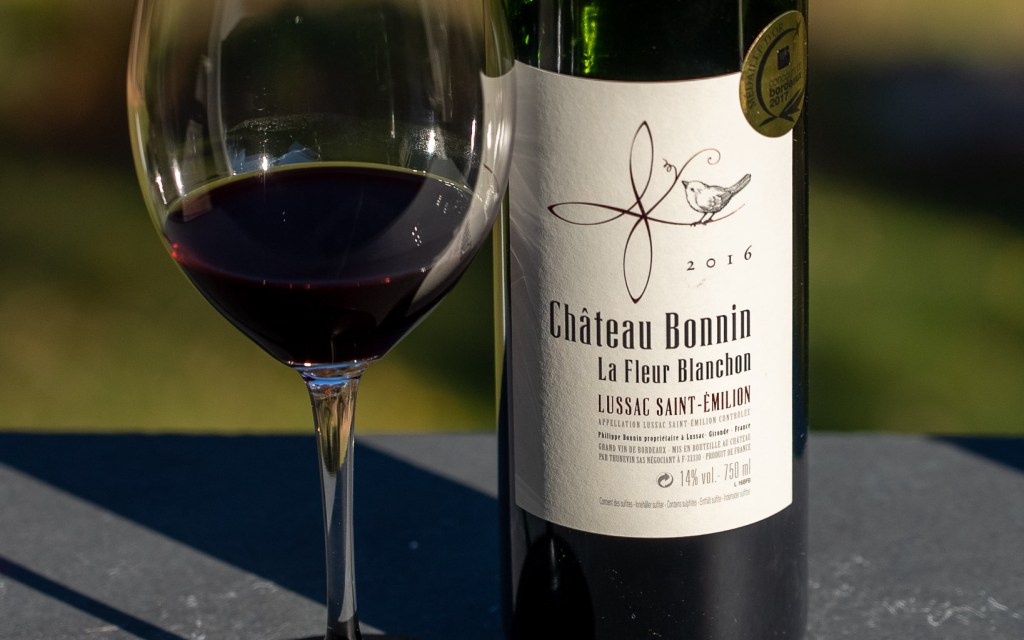
Satellite Villages of Saint-Émilion
At the bottom of the classification pyramid, quality may vary more widely and care must be taken with choosing the Chateau. The satellite villages have less favorable sites, less prestige, so they can’t support lavish vineyard and cellar work. In the US, typically expect to pay $20 or less for the satellite village wines
Chateau Bonnin “La Fleur Blanchon” Lussac Saint-Émilion AOC 2016 ($20 locally at France 44) 14% abv
95% Merlot, 5% Cabernet Sauvignon. Medium minus intensity blueberry, blackberry fruit. This wine showed the fruit the least clearly of this group. Medium body, high alcohol, medium minus finish. Frankly, this wine was a bit disappointing. Not a bad wine unless it’s compared to others in the group.
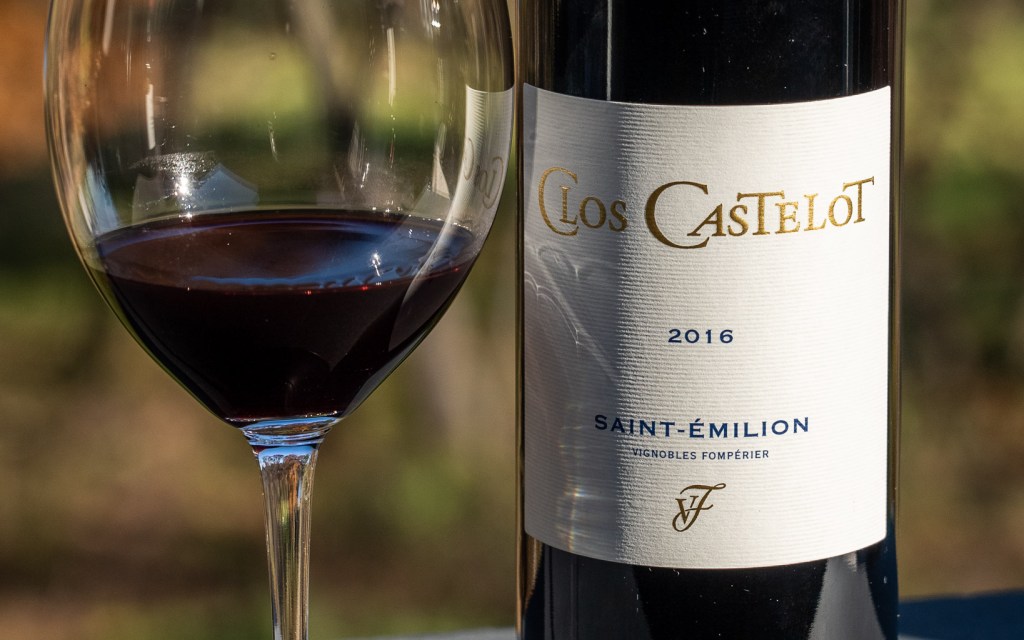
Saint-Émilion AOC Wines
Once in Saint-Émilion AOC proper, a winery has the advantage of name recognition and can command a slightly higher price, in the US this is often in the $20-25 range. Wineries have the ability to spend a bit more time and effort both in the vineyard and winery in order to produce a higher quality wine. The wine will show solid fruit as well as some non-fruit character from aging in oak, perhaps with a small percentage of new oak.
Clos Castelot Saint-Émilion AOC 2016 ($23 locally at France 44) 14.5% abv
62% Merlot, 25% Cabernet Franc, 3% Malbec. The blueberry and blackberry fruit showed more prominently in this wine as well as a touch of leather. A solid wine at this price point.

Saint-Émilion Grand Cru Wines
In order to qualify as Saint-Émilion Grand Cru, a Saint-Émilion chateau must demonstrate tighter control over yield as well as aging the wine for 14 months longer than those with the Saint-Émilion AOC label. Many AOC’s employ tasting panels for approval of wines in the AOC, and the Saint-Émilion Grand Cru tasting panel may be more strict than the Saint-Émilion panel.
Ch. La Grâce Dieu Saint-Émilion Grand Cru AOC 2016 ($35) 14.5% abv
80% Merlot, 20% Cabernet Franc. HVE3 certified, which is the official sustainability certification that any farm in France can apply for. To be certified, a farm (including winery) must undergo third party audit of their sustainability practices regularly. On day one, this wine was quite closed and a bit of a puzzle. However, on day two it had opened up significantly, showing very nice ripe fruit, a bit of subtle vanilla and some clean earth. This wine could age gracefully for several more years and would benefit from decanting before serving.

Chateau Fonroque Saint-Émilion Grand Cru Classé AOC 2018 ($45 at Wine.com) 14.5% abv
Full disclosure: I’m a fan of Château Fonroque, having visited back in 2017. Château Fonroque is certified organic and biodynamic, no easy task in the rainy maritime climate of Bordeaux. The wine is 80% Merlot, 20% Cabernet Franc and is aged in 30% new French oak. While still very young, this wine showed beautifully with plenty of fruit, earth and judicious oak influence, with a plush texture. While not inexpensive, it merits consideration as affordable in the context of a holiday celebration meal.
Saint-Émilion Premier Grand Cru Classé “A” and “B”
These last two classifications are a further cut above Saint-Émilion Grand Cru Classé. By nearly all standards, these wines no longer fall into the “Affordable” category unless the buyer is someone who lights their cigars with $20 bills. The wineries in this grouping consist of somewhere between 17 and 19 Châteaux who have been officially classified as “Grand Cru Classé” back in 1954, with updated classifications every 10 years. This was a great idea, giving wineries an incentive to maintain or improve their quality focus. Unfortunately, it resulted in bitter lawsuits and challenges to the classification. The last successful classification was in 2012, with a new update due in 2022. Stand by for fireworks!
The reason for all the acrimony is the price premium associated with these top wines. At release, a Premier Grand Cru Classé A wine like Chateau Cheval Blanc commands $600 per bottle in the US. A Premier Grand Cru Classé B wine like Chateau Pavie Macquin sells for $85-100 at release. Imagine if your Château was declassified from “A” to “B”, you would be ruined financially. On the flip side, if you are a Grand Cru Classé Chateau and you could move up to “B”, you could double the asking price for your wine. Incentive indeed.

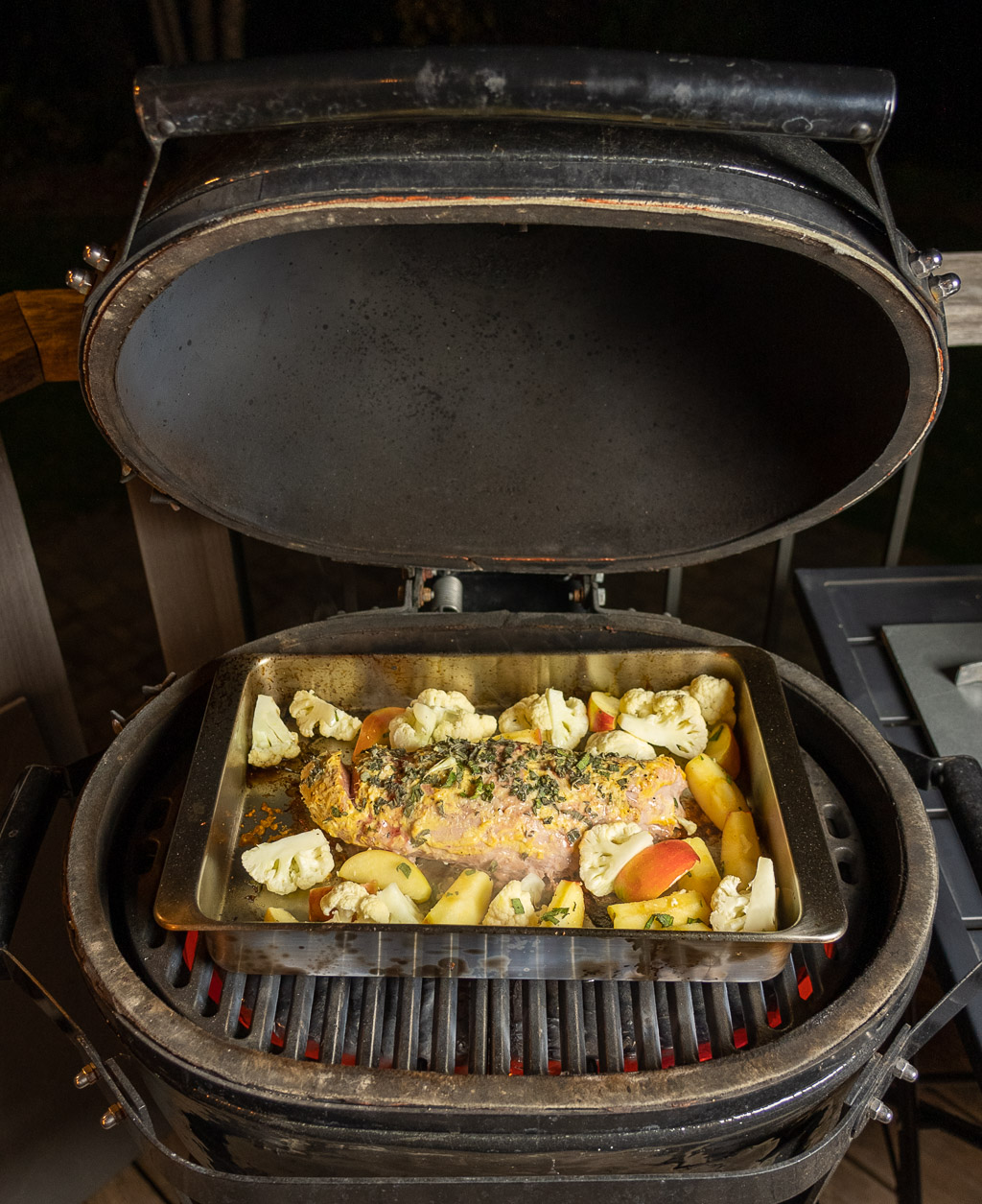


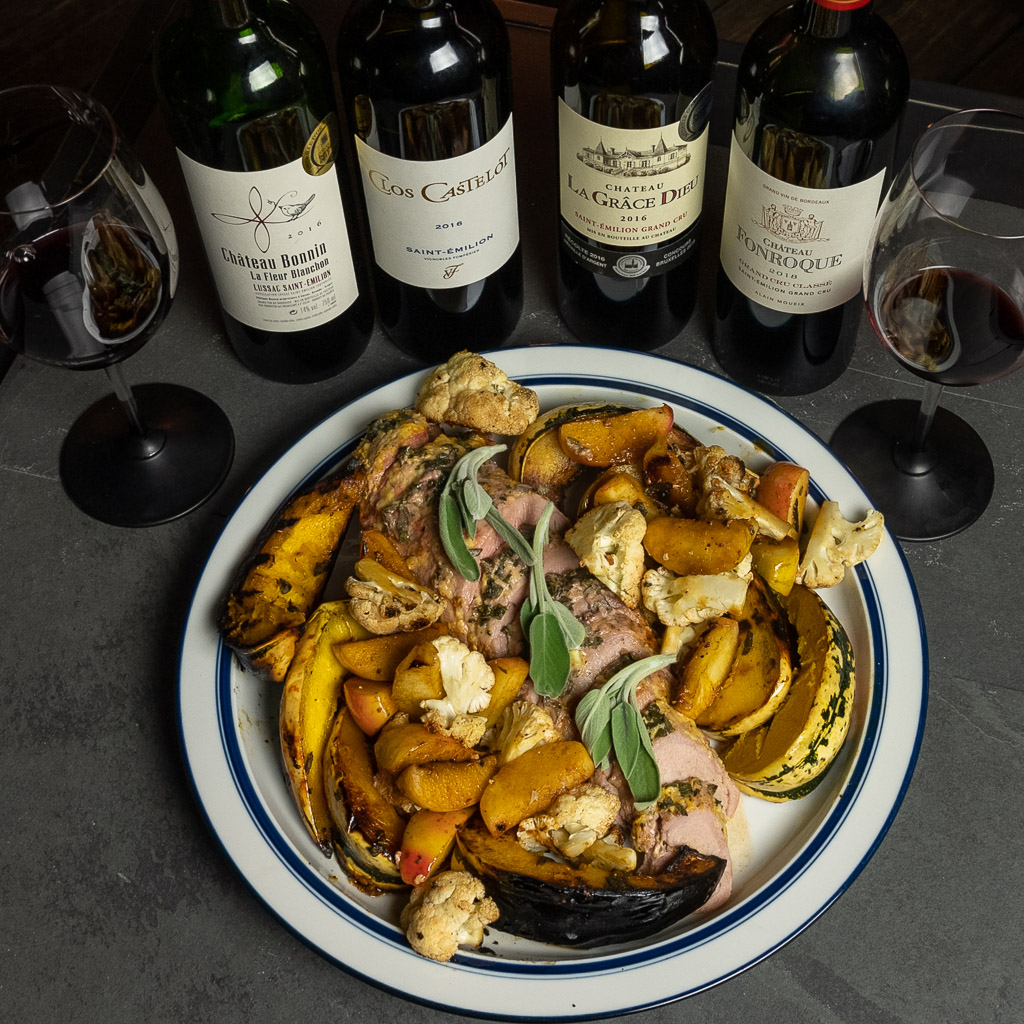
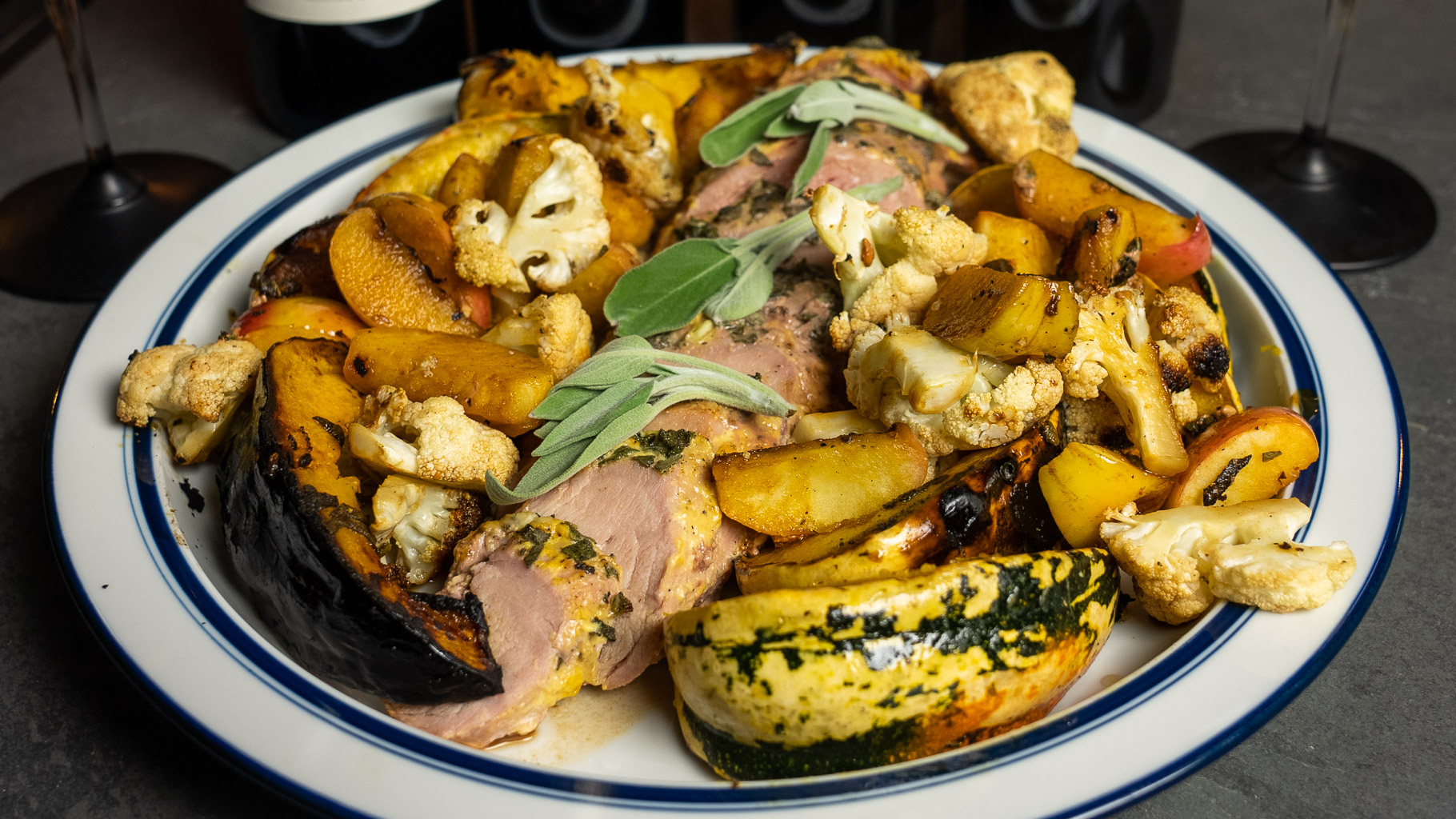
Saint-Émilion Wines with Pork Tenderloin and Fall Vegetables
Based on Merlot, Saint-Émilion wines are not as fiercely tannic as their high quality Left Bank counterparts. They pair well with red meats, but also with lighter meats like pork or even chicken. Fall vegetables like cauliflower and squash also pair well with Saint-Émilion wines. As shown in the photos, I cooked our dinner out on the grill, though the recipe was intended for the oven. It’s easy enough for a weeknight, especially if you use the convenience of your oven! Look for pork tenderloin with squash and apples at EatingWell.com.
Other Sage Bordeaux Advice from Fellow Winophiles Writers
Take a look below at all the good advice from my fellow Winophiles writers regarding affordable Bordeaux for your holiday table. We’d love to have you participate in our chat on Twitter on Saturday Nov. 20 from 10-11am CST. Just look for us at #winophiles!
- Sparkling Wine Secrets: Cremant from Bordeaux Paired with Bisque, Gourmet Grilled Cheese from Gwendolyn at Wine Predator
- How to Balance Quality vs. Price in Bordeaux Starting with Saint Émilion from Jeff at foodwineclick
- Cru Bourgeois: Welcoming Wines for Experts and Novices Alike from Susannah at avvinare
- Château Roc de Candale Saint-Émilion with Skirt Steak and Roasted Leeks from Nicole at Somm’s Table
- Chateau Haut Guillebot with Mini Cheeseball Truffles for Thanksgiving from Terri at Our Good Life
- Bay Scallop Chowder and a White Bordeaux Wine from Wendy at A Day in the Life on the Farm
- Spiced Pork Tenderloin with a Cherry Sauce with an Affordable Bottle of Bordeaux: Chateau des Mille Anges 2016 from Camilla at Culinary Adventures with Camilla
- Getting Good Bang for Your Bordeaux Buck from Cathie at Side Hustle Wino
- Bargain-hunting for a Côtes de Bordeaux celebration wine from Linda at My Full Wine Glass
References for this Post
link to Bordeaux Wines
link to Saint Emilion office of tourism

Comments
15 Responses to “How to Balance Quality vs. Price in Bordeaux Starting with Saint Émilion #Winophiles”Trackbacks
Check out what others are saying...-
[…] How to Balance Quality vs. Price in Bordeaux Starting with Saint Émilion from Jeff at foodwineclick […]






Nice range of wines and prices from one place. How fun to compare them! Thank you for the informative post.
Thanks Gwendolyn. I guess everyone can pick their own level of affordable!
As always, Jeff, your post goes above and beyond with amazing information and delicious food. Thanks for sharing.
Thanks Camilla! I have a soft spot for Saint-Émilion.
The benefit of having visited the region really comes through Jeff! An excellent explanation of the classification, and the region, and as always the pictures are incredible.
Thanks Cathy. Having visited really does help!
What a lovely experience. Thanks for sharing it with us.
Thanks Wendy!
This is an EXCELLENT description of the tiers. I admit, I got tired while writing my post, and kind of tapped out on this. I’m going to link to your post as a reference.
Thanks Nicole. On the flip side, I thought this got to be too long…
Also, that pork looks amazing!
Thanks. I only get one chance to plate things and I think the pork should have gone on top. Too messy to try a second time!
Wow, Jeff, what a great explanation of the tiers. Will try to track down the Ch. La Grâce Dieu and maybe the Chateau Fonroque, too.
Thanks Linda. Both were really nice, especially after getting a bit of air.